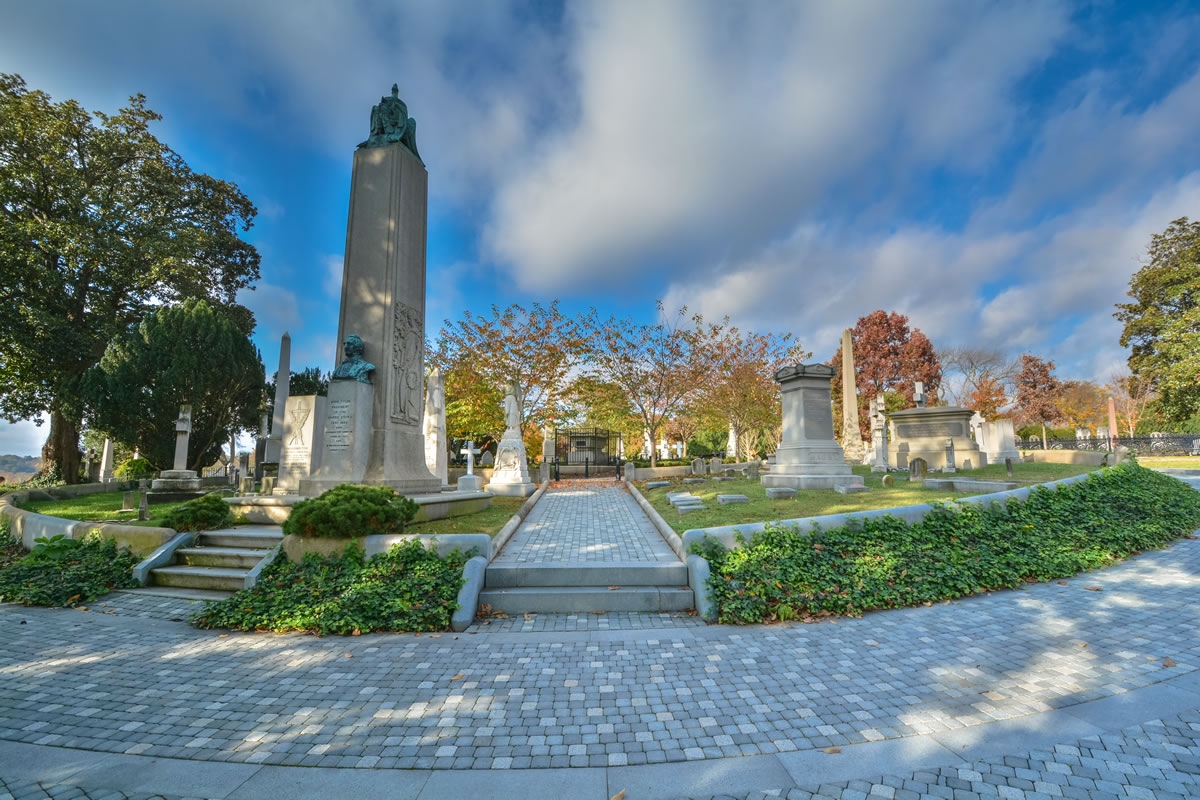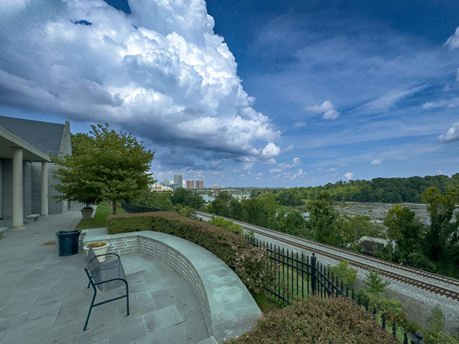Hollywood Cemetery is an outdoor museum that spans hundreds of acres in the capital of Virginia. As you plan your visit, there are a few must-see items to add to your list, including some famous gravesites and monuments as well as other spots that are not as well-known.
If you prefer a more structured way to explore the cemetery, visit our Tour Options page for a comprehensive list of available tour methods. Discover more about the cemetery's natural beauty with our online Natural Treasures Guides. To locate the gravesite of a specific individual, please use our Genealogy Records Search feature. Paper maps are available for purchase at the cemetery office for $1.00.
President James Monroe's Tomb
President James Monroe, the fifth president of the United States, was laid to rest in Hollywood Cemetery in 1858, twenty-seven years after he died in New York City. His tomb, locally known as “The Birdcage”, was designed by Albert Lybrock and erected in 1859.
The structure is made of a granite sarcophagus that is surrounded by an ornate Gothic-style cage made from cast iron. It was labeled a National Historic Landmark by the National Park Service in 1971 due to its unique architecture. In 2015, the tomb was repaired and restored to its original ivory color by the Department of General Services. The Birdcage is located in Presidents Circle overlooking the James River. Monroe's wife, daughter, and son-in-law are buried nearby.
President John Tyler's Monument
President John Tyler, the tenth president of the United States, was buried in Hollywood Cemetery in 1862. His death was the only one in presidential history to not be officially recognized in Washington D.C. due to his allegiance to the Confederate States of America.
Tyler requested arrangements for a simple burial, but Confederate President Jefferson Davis hosted a grand event, complete with a Confederate flag draped over the coffin. Tyler's monument stands in Presidents Circle not far from President James Monroe's tomb.
The Palmer Chapel Mausoleum
Perched on the banks of the James River, the Palmer Chapel Mausoleum was built in 1992. The mausoleum is notable for its elegant, chapel-like design that provides a serene and respectful space for remembrance.
Ginter Mausoleum
The Lewis Ginter Mausoleum is a notable historical site within the cemetery that epitomizes Victorian-era architecture and the legacy of Richmond's most influential philanthropists. Constructed in 1897, this mausoleum serves as the final resting place of Lewis Ginter, a prominent businessman and benefactor.
Overlook One
Located on the east side of the Palmer Mausoleum, Overlook One was designed by Van Yahres Studio and constructed by Messer Contracting Company using Georgia granite. It offers some of the best views of the James River, Kanawha Canal, Richmond skyline, and downtown bridges. Overlook One was made possible by generous grants from the James River Garden Club, the Dominion Foundation, the Richard S. Reynolds Foundation, and Bob and Anna Lou Schaberg Fund at the Virginia Nonprofit Housing Coalition.
Overlook Two
Built on the west side of Palmer Mausoleum, Overlook Two rivals its neighbor with an equally commanding view of the river below and far shore in the distance. It was made possible by a generous grant from the Lettie Pate Evans Foundation in Atlanta.
Overlook Three
Overlook Three is a cobblestone walkway lined with benches, bollards and chains, leading visitors to Davis Circle. It provides inviting views of the James River, Davis Circle and Richmond skyline in the distance. It was made possible by a grant from the Ratcliffe Foundation in Tazewell County, Virginia.
The Glade
As you come down the hill from the entrance to the cemetery, there is a meadow-like area to the right known as The Glade. Once a lake that swans often glided through and an island with a birdbath, The Glade is now used as a scattering garden for cremated remains and a place for memorialization. To connect with its historical past, a birdbath and fountain were placed in the garden's center.
The Iron Dog
One of the most well-known monuments in Hollywood Cemetery is a cast-iron Newfoundland dog. The statue stands guard over the grave of a little girl who died in 1862.
There are many stories about how the Iron Dog came to be in Hollywood Cemetery, including the most popular version that it was moved there to keep it from being melted down into bullets during the Civil War.














